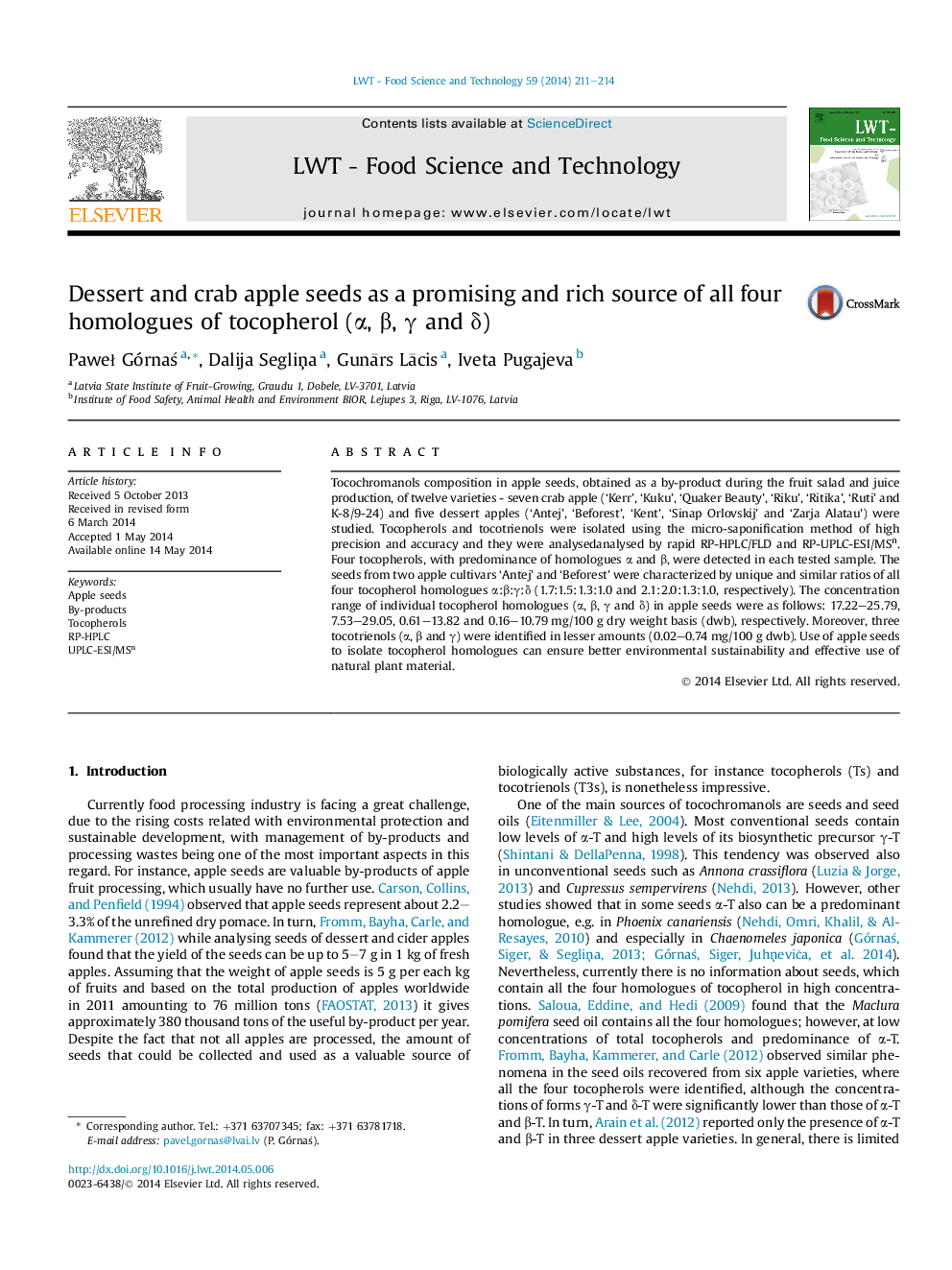| Article ID | Journal | Published Year | Pages | File Type |
|---|---|---|---|---|
| 6403538 | LWT - Food Science and Technology | 2014 | 4 Pages |
â¢Utilization of apple seeds by-products from cider and fruit salads industry.â¢Unusual combination of all four homologues of tocopherol (α, β, γ and δ).â¢The apple seeds as potential naturally rich source of tocopherols.
Tocochromanols composition in apple seeds, obtained as a by-product during the fruit salad and juice production, of twelve varieties - seven crab apple ('Kerr', 'Kuku', 'Quaker Beauty', 'Riku', 'Ritika', 'Ruti' and K-8/9-24) and five dessert apples ('Antej', 'Beforest', 'Kent', 'Sinap Orlovskij' and 'Zarja Alatau') were studied. Tocopherols and tocotrienols were isolated using the micro-saponification method of high precision and accuracy and they were analysedanalysed by rapid RP-HPLC/FLD and RP-UPLC-ESI/MSn. Four tocopherols, with predominance of homologues α and β, were detected in each tested sample. The seeds from two apple cultivars 'Antej' and 'Beforest' were characterized by unique and similar ratios of all four tocopherol homologues α:β:γ:δ (1.7:1.5:1.3:1.0 and 2.1:2.0:1.3:1.0, respectively). The concentration range of individual tocopherol homologues (α, β, γ and δ) in apple seeds were as follows: 17.22-25.79, 7.53-29.05, 0.61-13.82 and 0.16-10.79 mg/100 g dry weight basis (dwb), respectively. Moreover, three tocotrienols (α, β and γ) were identified in lesser amounts (0.02-0.74 mg/100 g dwb). Use of apple seeds to isolate tocopherol homologues can ensure better environmental sustainability and effective use of natural plant material.
